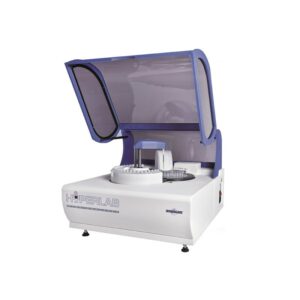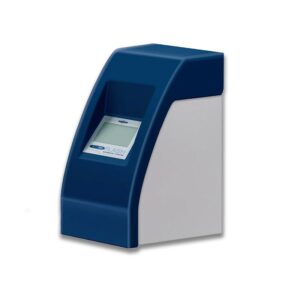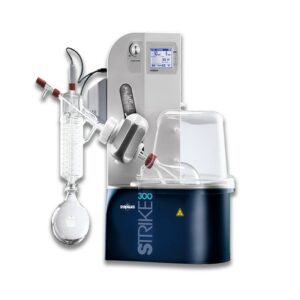Enzymatic & Colorimetric Kits
ACETALDEHYDE
It is the product of intermediate oxidation of ethyl alcohol, before this becomes acetic acid.
Being index of initial oxidation of the wine, it is good to determine the acetaldehyde throughout the processing phase of the wine, and also in the refining phase, as well as before bottling.
The determination of acetic aldehyde is also very important during the practice of micro-oxygenation (its concentration remains constant)
ACETIC ACID
It ‘s a product of oxidation of ethanol, and represents about 95% of volatile acidity.
The volatile acidity provides information on the health of a wine, whether legacy of disease, winemaking wrong or faulty storage.
The optimum concentration varies from 0.2 to 0.7 g / l (e.g. legal limit for many standards is about 1 g / l, dependent on the degree of alcohol).
The traditional analytical method, by distillation in steam current, cannot be automated and longer to perform than the enzymatic method.
ASCORBIC ACID
The L-ascorbic acid is a naturally occurring organic compound with antioxidant properties widely used on food & beverage industry to prevent oxidation of aromatic fractions and coloring of various beverages such as wines, musts, fruit juices, etc ….
ANTHOCYANINS
They are part of the phenolic compounds of grapes and wine, the main red and blue dyes.
They are and extremely important to the organoleptic characteristics of a wine. They are determined during the maceration of red grapes, during and after fermentation.
Together with the dosage of total polyphenols help to determine whether a product deserves to be “refined”.
The most reliable method, even if difficult to perform, is in HPLC. The colorimetric method correlates however broadly satisfactory.
CALCIUM
In must tends to precipitate during alcoholic fermentation.
It ‘s important to determine the concentration (which should not exceed about 80 g/l) to prevent precipitation of neutral calcium tartrate. The colorimetric method responds very well to the need for this determination.
CATECHINS
They are part of the family of polymers condensed tannins present in grapes and wine. The analysis is carried out during the period of maceration, on must, before and after fermentation on the finished wine. Even in this case, the colorimetric analysis is the best solution and the most convenient one.
CHLORIDE
They are present in wines in varying amounts.
The analysis on the finished product is carried out to verify the content according to the law limits.
Analysis is usually carried out by silver-metric titration while colorimetric method, which is also very accurate, is now in routine use of many laboratories.
CITRIC ACID
Organic acid naturally present in the wine. Contributes to the formation of total acidity and has the property to involve ferric iron in a soluble complex anion. The analysis is performed to determine the concentration present and evaluate possible additions to reach the desired level of total acidity.
COLOR
Important parameter to qualify a red wine, and the color points help to assess the commercial value.
The reading of the samples at 420 and 520 nm determines the color points (intensity) and the relationship with the hue, considering how heavy the contribution of red / purple on the yellow / brown. This method also allows reading at 620 nm.
COPPER
The grape juice contains copper both from grapes (minimally) and from cupric treatments. The copper should be determined after fermentation to assess whether or not to proceed to the stage of “de-metallization”, as there is a legal limit expected.
The method of analyses could be atomic absorption (very expensive) or stripping. Colorimetric method works well on white wines, anyway on red needs a little bit long sample preparation.
ETHANOL
Produced through fermentation processes carried out by yeasts that convert sugars into carbon dioxide and ethanol, its l concentration increases as the fruit ripens and has to be checked on finish juice as per legal limit (0,5% Vol on fruit juices)
This kit can be used for low ethanol concentration, lower than 2%Vol
GLICERINE
Produced during glycero-pyruvic fermentation, it greatly contributes to the characteristics of the wine giving harmonic taste sensation, body and roundness.
It would be appropriate to determine it after every re-fermentation.
“Trinder” method (colorimetric final stage) is suggested on wine, new UV is the best option for fruit juice and must.
GLUCONIC ACID
Organic acid from glucose by oxidation of the aldehyde function caused by an enzyme present on molds. The analysis is carried out on the raw material, the must and wine. It is very important for importers and users of the grapes from different backgrounds. The enzymatic way is the analytical method faster and more precise.
IRON
Fruit juice and wine contains iron: from grapes, from the ground, from manipulation, transport etc. The determination is performed to determine whether to proceed to the stage of “de-metallization”. Colorimetric method is becoming “routine” as allows precise determination at low concentrations.
ISO-CITRIC ACID
Iso-citric acid is a carboxylic acid commonly used as a marker for judging the authenticity of fruit juices.
In orange juice, for example, the citric acid / acid D-isocitric ratio is usually less than 130, a higher value is generally indicative of adulteration.
LACTIC ACIDS
Organic acids that originate from the malo-lactic fermentation (L-lactic acid) or from abnormal re-fermentations from decomposition of the sugars in the presence of hetero-lactic bacteria (D-Lactic).
L-lactic acid can be determined at the beginning of malolactic fermentation to see if the inoculation of bacterial works, D-Lactic Acid is a negative index because it gives to wine a bad taste.
MAGNESIUM
Present in wine in greater quantity than calcium, plays an important role in the precipitation of colloids.
PROTEIN STABILITY
This kit is useful for determination of protein stability / instability in wine; to check effectiveness of bentonite and/or other precipitants agents.
R.A.N. (READILY ASSIMILABLE NITROGEN)
R.A.N. is the sum of AMMONIACAL NITROGEN and ALPHA-AMINO NITROGEN. They are really important in relation to protein stability and evaluation of the “authenticity” of the wine: ammonia nitrogen may be added to mask the lack of amino acids derived from grapes.
The available nitrogen (RAN) is also a factor of great importance to determine whether there are sufficient nutrients in musts to the growth of yeasts responsible for alcoholic fermentation. This method replaces the FORMALIN N° which proved to be carcinogenic! In fact sum of ammoniacal and ±-amino nitrogen corresponds to the number of Formolo.
SUGARS
Glucose, fructose and sucrose are linked to the alcoholic strength of
a drink as it ferments and of the sweetness and energy power of a wine.
The determination of glucose / fructose is carried out mainly to follow the process of fermentation of wine and to determine the residue at the end of fermentation. Enzymatic way is now official method for many organizations as OIV. Moreover Fehling method is quite impractical and also not determines pentose sugars fermentable as sucrose.
SULPHUR DIOXIDE
Antioxidant and antiseptic functions of SO2 are well known.
The determination is carried out during the whole process of elaboration of the wine, from the must to the bottle.
The official method of distillation is not practical; the usual one, Ripper, gives good results on whites but not on red wines due to the interference of polyphenols, tannins and color.
The colorimetric method correlates well with the official method
TARTARIC ACID
It is the organic acid is specific of grapes, the most important of fixed acids, the stronger, the more dissociated, and the most resistant to the action of the decomposing bacteria.
Its concentration decreases by precipitation of potassium bitartrate during the process of tartaric stabilization; it is determined on the must, on the wine after tartaric stabilization and before bottling.
The colorimetric method is really simple to apply.
STANDARDS FOR ENZYMATIC AND COLORIMETRIC KITS
ACETIC ALDEHYDE STANDARD 100mg/lt 1x10ml
IRON STANDARD 20mg/lt 1x10ml
CALCIUM STANDARD 100mg/lt 1x10ml
GLYCEROL STANDARD 10g/lt 1x10ml
GLUCOSE FRUCTOSE STANDARD 20g/lt 1x10ml
MULTIPARAMETRIC STANDARD 6X10ml composed by:
L-Malic Acid 5g/l; D-Lactic Acid 3g/l; L-Lactic Acid 3g/l;
D-Gluconic Acid 1g/l; Citric Acid 0,8g/l; Acetic Acid 1g/l
POLYPHENOLS STANDARD 5g/l 1x10ml
TARTARIC ACID 5g/l 1x10ml
AMMONIACAL AZOTE STANDARD 50mg/l 1x10ml
alfa-AMINIC STANDARD 160mg/l 1x10ml
CHLORIDES STANDARD 1g/l 1x10ml
COPPER STANDARD 2mg/l 1x10ml
POTASSIUM STANDARD 1500mg/l 1x10ml
MAGNESIUM STANDARD 24.3 mg/l 1x10ml
PYRUVIC ACID STANDARD 0.5 g/l 1x10ml
SULPHATES STANDARD 2 g/l, 1x100ml
GLUCOSE+FRUCTOSE+SUCROSE STANDARD
SUGARS CALIBRATION KIT HC LIQUID 5×10




